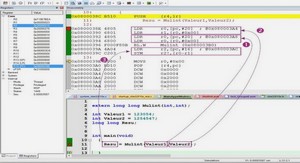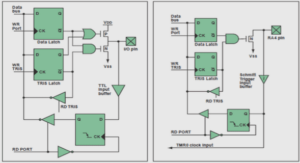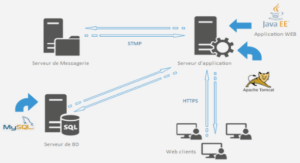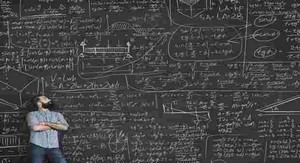CONCEPTION ET REALISATION D’UN DISPOSITIF D’IMPACT ORIGINAL
DEVICE CONCEPTION
Experimental set-up The experimental device was made from aluminium alloy profiles from the Elcom company. It comprises two linear slides (2 meters long, with a section of 80 x 80 mm²) placed on three legs (0.6 meter height, with a section of 40 x 80 mm²) to ensure good stability. The distance between the two rails is kept constant by means of four spacer blocks. A photomicrosensor (OMRON model EE-SX473) is fixed on the testing ground close to the impact. The experimental set-up is presented in figure III-1. Chapitre 3 106 Figure III-1. Experimental set-up. The moving trolley is propelled against the fixed trolley by means of a SMC CP95 pneumatic jack connected to a laboratory compressed air system. This pneumatic jack has an internal diameter of 32 mm and a maximal stroke of 250 mm. The overpressure can range from 0.5 to 10 bar. An air container with a capacity of 12 litres (Reflex) is installed as damping volume to ensure better control of the pressure in the pneumatic jack when opening the valve. A manometer controls air pressure within the container, allowing selection of the trolley velocity at the end of the acceleration phase. The two trolleys were constructed with aluminium alloy plates and consist of two Elcom double bearing units. Each has a concentric and eccentric double bearing unit which allows adjustment of the tight fit between the trolley and the guiding slides. Indeed, it is important to have as little friction as possible while maintaining a perfect guidance, as the moving trolley runs along the linear slides. A stainless steel mass of 2.68 kg is tightly fixed inside each trolley to obtain a total mass of 4.72 kg. Our design is symmetrical so that both trolleys, equipped with an accelerometer, can be set in motion. However, it is much more convenient, when using the high-speed camera, to fix one trolley and to throw the other against it. An optical target is positioned on the moving trolley so that it passes through the ray of the photomicrosensor (figure III-2). This element is very important and must be machined with high precision to allow the strain field to be computed with accuracy.
Data acquisition / collection
Tension and acceleration
A piezoelectric accelerometer (DJB, A/24/E) is glued at the back side of the stainless steel mass to measure the acceleration throughout its movement, including the acceleration phase and the free translation. It has a sensitivity of 5.37 pC/g and can measure acceleration up to 105 g. A charge amplifier converts the acceleration signal to a dynamic signal acquisition module (NI PCI-4462) with a 16 bits A/D converter. The accelerometer sensitivity and the gain x1 are set in the amplifier to ensure accurate conversion. The frequency range of the high pass filter (0.1 Hz) is switched on. The dynamic signal acquisition module can record up to 204.8 ksamples per second on each of the four available acquisition channels. Only two channels were used for this work, one for acceleration, and one for the photomicrosensor. Acquisition is triggered as the first crenel of the optical target crosses the photomicrosensor. A buffer in the acquisition module saves any data collected before, which is then available in the acquisition file as « pre-trigger » data. Figure III-3 gives an example of the raw data recorded during a typical test. When a crenel of the optical target passes through the sensor, the tension falls to zero. Since the distance between the edges of two successive crenels is known with accuracy, the trolley velocity is simply given by: 2 1 ( ) d v t t (1) where v is the trolley velocity (m.s-1 ), d is the distance between the edges of the first two crenels (m), t1 is the time (s) at the end of the first crenel and t2 the time (s) at the end of the second one. It is important to note that we use two edges of the same sign (in our case, the descending edge) so that the signal is not affected by the size of the light beam of the photosensor. This is very important to ensure an accurate velocity determination. The acquisition module is driven by the LabView Signal Express software which allows parameters such as accelerometer sensitivity, triggering parameters, the number of acquisitions and the frequency of acquisition to be easily set. 140 000 pre-triggering data are also recorded.




